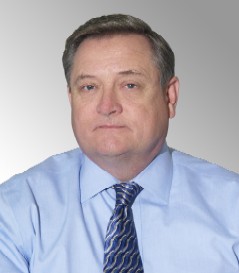Michael Fitzgerald was elected vice president marketing for Standard Motor Products (SMP) in May 2007. From July 2003 to May 2007, Fitzgerald held a variety of sales and marketing positions in the company, including director of sales and marketing – NAPA. Prior to 2003, he worked for Echlin/Dana (acquired by SMP in 2003) as a territory salesman, zone manager, retail marketing manager and vice president of marketing. Celebrating its 90th year in business this year, SMP recently made a major announcement that it would bring its popular import brand Intermotor to the U.S. In this exclusive interview, Fitzgerald talks to aftermarketNews about the introduction of SMP’s Intermotor brand to the U.S. and shares his insights and predictions for the import market going forward. 
Standard recently announced the introduction of the Intermotor brand to the U.S. Tell us about this product line and its history overseas.
SMP purchased the popular Intermotor brand a little over 15 years ago. Since then, we have been supplying import OE parts and import parts specialists worldwide with the Intermotor brand.
Why is this the right time to introduce an import brand to SMP’s product line-up in the U.S.?
Last year was the first time that import nameplates outsold domestic nameplates. Changing demographics and the growing number of import vehicles on the road caused us to take a hard look at our brand and product strategies. We conducted focus groups, met with key customers and talked to installers. Customer demand dictated a clear need for an import-specific program. We evaluated building a new brand name, but we realized that bringing Intermotor to the U.S. allowed us to leverage a popular brand we already own.
In addition to advertising, what other methods will SMP use to reach out to distributors and technicians to educate them about the Intermotor brand?
We are employing a variety of methods to communicate the Intermotor brand, from advertising and public relations to social networking and memberships in import-specific organizations at both the local and national levels. We also are supplying point-of-sale kits to jobbers who sell Intermotor to communicate and educate their customers.
What kind of a role do you foresee the import segment playing in SMP’s U.S. business in the next few years?
We foresee the import segment growing consistently for us in the next several years. Not just because of the changing demographics, but because the average age of import vehicles is 2.5 years younger than domestic vehicles. The current import vehicle population is aging toward the service and repair sweet spot and that means opportunity for us and our distribution and installation partners.
As you alluded to earlier, last year Toyota beat out GM for the first time ever, in terms of global annual sales; and consumer studies have shown a strong interest in foreign nameplates. How do you envision the U.S. car parc in the next five to 10 years – in terms of domestic vs. foreign nameplates?
In the short-term, the number of import vehicles will grow. In the mid- to long-term, a lot depends on the success of the plans the domestic manufacturers have to reinvent themselves.













